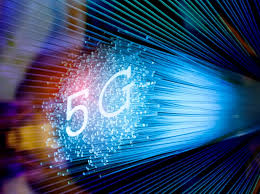5G WIRELESS…ISN’T
There is a buzz-phrase going around the telecom industry that goes like this, “The road to 5G wireless is paved with fiber.” Sounds like an oxymoron, right? Does wireless really need wire? The short answer is yes and, more specifically, a LOT of wire and, even more specifically, fiber optic wire.
What’s going on here? A good starting point is to remember the evolution of these ubiquitous cellular phones we all now carry everywhere. In fact, many people express that if they leave the house and forget either their phone or wallet, they hope it is the wallet.…they want the phone. Of course, that is because the cellular phone has morphed into a hand-held computer providing more and more functionality. We talk, navigate, text, read emails, pay for things, play games, and follow social media…to name a few. And the more we use those devices and the more that there are and the more streaming devices that exist in our hands, homes, vehicles and offices, the more network infrastructure, speed, bandwidth, low latency, and reliability is needed.
Those growing needs are the foundations for the utility of the coming promise of 5G. The fact is, something must change to support the current and future functions and much of that change revolves around 5G. But this is important…5G is not a marginal upgrade over the 4G and LTE we are all used to. It is more elemental. The speeds of 5G make the technology virtually “real time.” That alone is a game changer. It is the real time, near instant, speed that opens the door for new ways to look at transportation, medicine, manufacturing, and on and on.
Fiber optics are often described as “the speed of light.” But to be fair, radio waves like from cell towers are also lightning fast. The question becomes, what broadband delivery system is the best combination of speed and reliability? With that being the question, many top industry pundits answer like this: “Fiber optic cable is the gold standard of speed and reliability.”
The promise of 5G does not ride on a linear system upgrade but, rather, on a vast complicated network that requires much wireless equipment, cell towers, mini towers and even satellites, plus monumental deployments of fiber optic cable. Industry experts like at the Fiber Broadband Association say the fiber optic backbone needed for 5G will be hundreds of billions of dollars. Other estimates refer to near a trillion dollars over the next decade. Whatever the right number is, it is huge and with the network complexities rising with usage, commitments to various consumers (like rural folks) and the competitive pressures for subscribers by the ISPs, we can expect that the backbone of fiber optic “wire” needed for 5G wireless will continue to explode for years to come.
At a granular level, ask yourself, “How many big orange spools have I seen along the road in the past year?” Every one of those spools, when buried in the ground, will be filled with fiber optic cable. This is the same backbone of cable needed to support the vastness and complexity of 5G wireless. The Fiber Broadband Association estimates that just to prepare the top 25 metro areas of the country will require well over a million miles of fiber.
Truly, the road to 5G wireless is paved with fiber optic cable.
Broadband Infrastructure, Inc.


